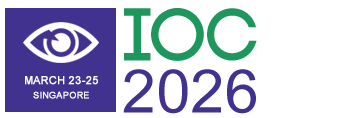Title : Gonioscopy-assisted transluminal trabeculotomy: A viable minimally invasive approach for management of open-angle glaucoma
Abstract:
Introduction: In this review, an analysis of the outcomes of Gonioscopy-Assisted Transluminal Trabeculotomy (GATT) was done in patients with Primary Open-Angle Glaucoma (POAG), with outcomes in one study being compared to trabeculectomy. Trabeculectomy is already accepted as an effective procedure for advanced glaucoma, GATT offers a minimally invasive alternative that has shown promise in recent studies.
Methods: Relevant studies were identified and selected by a literature search using Medline and Embase. The review focused on data comparing post-operative IOP reduction, changes in medication burden, and reported complications following GATT and trabeculectomy.
Results: One study at 6 months reported a significant reduction in IOP from 26.94 mmHg preoperatively to 15.59mmHg in 69 patients. Medication use decreased from 2.59 to 0.76 per day. Adverse effects included hyphema, transient vision loss, iridodialysis, and corneal edema.
Another study observed a drop in IOP from 27.70±10.30mmHg to 14.04±3.75mmHg at 12 months in 56 eyes. Medication use fell from 3.73±0.98 to 1.82±1.47. Reported complications included hyphema, IOP spikes, and corneal edema.
In a four-year retrospective study, IOP decreased from 27.0±10.0mmHg to 14.8±6.5mmHg. Medication usage dropped from 3.2±1.0 to 2.3±1.0. Adverse events, including hyphema, were transient.
Another study evaluated 124 eyes and found that IOP in the GATT-only group reduced from 27.54±8.09mmHg to 15.57±3.34mmHg at 12 months and 15.50±3.40mmHg at 24 months. In the GATT combined with phacoemulsification group, IOP decreased from 26.40±6.37mmHg to 14.61±2.28mmHg at 12 months and 16.08±2.38mmHg at 24 months. Medication use was minimal in both groups.
The last study after 18 months, comparing GATT to trabeculectomy with mitomycin C, in 110 eyes showed that GATT reduced IOP from 27.59±4.70mmHg to 15.26±3.47mmHg. Trabeculectomy achieved a mean IOP reduction of 12.48±4.58mmHg. Hyphema was the most common complication in both groups.
Conclusion: GATT has shown to effectively lower IOP and reduce medication burden in patients with POAG. Although GATT is associated with transient hyphema in some cases, it remains a viable minimally invasive option. GATT can be considered as an option for mild to moderate POAG cases, and allowing trabeculectomy to be the next stage treatment for more advanced cases. However, further long-term studies- by itself and in comparison- to fully highlight the safety and efficacy profile of this procedure.




